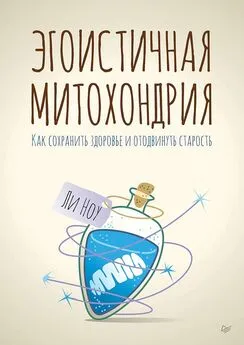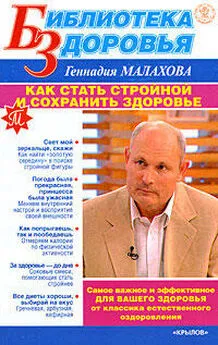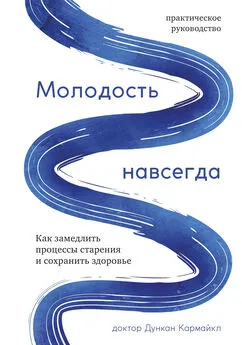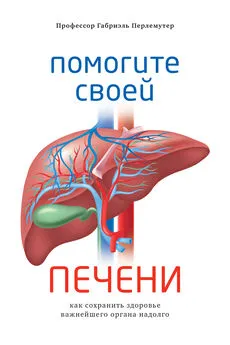Ли Ноу - Эгоистичная митохондрия. Как сохранить здоровье и отодвинуть старость
- Название:Эгоистичная митохондрия. Как сохранить здоровье и отодвинуть старость
- Автор:
- Жанр:
- Издательство:Питер
- Год:2020
- Город:Санкт-Петербург
- ISBN:978-5-4461-1021-6
- Рейтинг:
- Избранное:Добавить в избранное
-
Отзывы:
-
Ваша оценка:
Ли Ноу - Эгоистичная митохондрия. Как сохранить здоровье и отодвинуть старость краткое содержание
В нашем организме работают крошечные «энергетические станции» — митохондрии. Именно они отвечают за наше здоровье и отличное самочувствие. Когда они работают хорошо, мы не испытываем недостатка в энергии. А когда плохо — страдаем от заболеваний. Доктор Ли Ноу открывает тайну: заболевания, которые кажутся не связанными между собой на первый взгляд: диабет, рак, шизофрения, хроническая усталость, болезнь Паркинсона и другие — имеют общую природу.
Сегодня нам известно, как улучшить работу митохондрий, обеспечивающих организм энергией на 90 %. В этой книге вас ждет актуальная информация о питании, образе жизни, кетогенной диете и добавках, которые возвращают здоровье митохондриям, а следовательно, и нам.
Эгоистичная митохондрия. Как сохранить здоровье и отодвинуть старость - читать онлайн бесплатно ознакомительный отрывок
Интервал:
Закладка:
Todd R. D., Botteron K. N. Is attention-deficit/hyperactivity disorder an energy deficiency syndrome? Biol Psychiatry. 2001 Aug 1; 50(3):151–8. doi:10.1016/S0006-3223(01)01173-8.
Volkow N. D., et al. Differences in regional brain metabolic responses between single and repeated doses of methylphenidate. Psychiatry Res. 1998 Jul 15; 83(1):29–36. doi:10.1016 /S0925-4927(98)00025-0.
West J., et al. Response inhibition, memory and attention in boys with attention-deficit/ hyperactivity disorder. Educational Psychology. 2002; 22:533–51.
Zametkin A., et al. Cerebral glucose metabolism in adults with hyperactivity of childhood onset. N Engl J Med. 1990 Nov 15; 323(20):1361–6. doi:10.1056/NEJM199011153232001.
Aaron L. A., Buchwald D. Chronic diffuse musculoskeletal pain, fibromyalgia and co-morbid unexplained clinical conditions. Best Pract Res Clin Rheumatol. 2003 Aug;17(4):563–74. doi:10.1016/S1521-6942(03)00033-0. Baraniuk J. N., et al. A chronic fatigue syndrome — related proteome in human cerebrospinal fluid. BMC Neurol. 2005 Dec; 5:22. doi:10.1186/1471-2377-5-22.
Barnes P. R., et al. Skeletal muscle bioenergetics in the chronic fatigue syndrome. J Neurol Neurosurg Psychiatry. 1993 Jun; 56(6):679–83. doi:10.1136/jnnp.56.6.679.
Bengtsson A., Henriksson K. G. The muscle in fibromyalgia — a review of Swedish studies. J Rheumatol Suppl. 1989 Nov; 19:144–9.
Brenu E. W., et al. Immunological abnormalities as potential biomarkers in chronic fatigue syndrome/myalgic encephalomyelitis. J Transl Med. 2011 May 28; 9:81. doi:10.1186/1479-5876-9-81.
Brown M. M., Jason L. A. Functioning in individuals with chronic fatigue syndrome: increased impairment with co-occurring multiple chemical sensitivity and fibromyalgia. Dyn Med. 2007 Jul 30;6:9. doi:10.1186/1476-5918-6-9.
Buchwald D., Garrity D. Comparison of patients with chronic fatigue syndrome, fibromyalgia, and multiple chemical sensitivities. Arch Intern Med. 1994 Sep 26; 154(18):2049–53. doi:10.1001/archinte.1994.00420180053007. Castro-Marrero J., et al. Could mitochondrial dysfunction be a differentiating marker between chronic fatigue syndrome and fibromyalgia? Antioxid Redox Signal. 2013 Nov 20;19(15):1855–60. Epub Apr 22. doi:10.1089/ ars.2013.5346.
Cordero M. D., et al. Coenzyme Q(10): a novel therapeutic approach for fibromyalgia? case series with 5 patients. Mitochondrion. 2011 Jul; 11(4):623–5. doi:10.1016/j.mito.2011.03.122.
Cordero M. D., et al. Coenzyme Q10 in salivary cells correlate with blood cells in fibromyalgia: improvement in clinical and biochemical parameter after oral treatment. Clin Biochem. 2012 Apr; 45(6):509–11. doi:10.1016/j. clinbiochem.2012.02.001.
Cordero M. D., et al. Can coenzyme Q10 improve clinical and molecular parameter in fibromyalgia? Antioxid Redox Signal. 2013 Oct 20; 19(12):1356–61. Epub 2013 Mar 4. doi:10.1089/ars.2013.5260.
Cordero M. D., et al. Is inflammation a mitochondrial dysfunction-dependent event in fibromyalgia? Antioxid Redox Signal. 2013 Mar 1;18(7):800–7. doi:10.1089/ars.2012.4892.
Devanur L. D., Kerr J. R. Chronic fatigue syndrome. J Clin Virol. 2006 Nov; 37(3):139–50. doi:10.1016/j.jcv.2006.08.013.
Exley C., et al. A role for the body burden of aluminium in vaccine-associated macrophagic myofasciitis and chronic fatigue syndrome. Med Hypotheses. 2009 Feb; 72(2):135–9. doi:10.1016/j.mehy.2008.09.040.
Jammes Y., et al. Chronic fatigue syndrome: assessment of increased oxidative stress and altered muscle excitability in response to incremental exercise. J Intern Med. 2005 Mar; 257(3): 299–310. doi:10.1111/j.1365–2796.2005.01452.x.
Kennedy G., et al. Oxidative stress levels are raised in chronic fatigue syndrome and are associated with clinical symptoms. Free Radic Biol Med. 2005 Sep 1; 39(5):584–9. doi:10.1016/j.freeradbiomed.2005.04.020. Lanea R. J., et al. Heterogeneity in chronic fatigue syndrome: evidence from magnetic resonance spectroscopy of muscle. Neuromuscul Disord. 1998 May; 8(3–4):204–9. doi:10.1016/S0960 -8966(98)00021-2.
Maes M. Inflammatory and oxidative and nitrosative stress pathways underpinning chronic fatigue, somatization and psychosomatic symptoms. Curr Opin Psychiatry. 2009 Jan; 22(1):75–83
Manuel-y-Keenoy B., et al. Antioxidant status and lipoprotein peroxidation in chronic fatigue syndrome. Life Sci. 2001 Mar 16; 68(17):2037–49. doi:10.1016/S0024-3205(01)01001-3.
Meeus M., et al. The role of mitochondrial dysfunctions due to oxidative and nitrosative stress in the chronic pain or chronic fatigue syndromes and fibromyalgia patients: peripheral and central mechanisms as therapeutic targets? Expert Opin Ther Targets. 2013 Sep; 17(9): 1081–9. Epub Jul 9. doi:10.1517/14728222.2013.818657.
Miyamae T., et al. Increased oxidative stress and coenzyme Q10 deficiency in juvenile fibromyalgia: amelioration of hypercholesterolemia and fatigue by ubiquinol-10 supplementation. Redox Rep. 2013; 18(1):12–9. doi:10.1 179/1351000212Y.0000000036.
Myhill S. CFS — The central cause: mitochondrial failure [Internet]. Doctor Myhill.co.uk. [Cited 2017 June 29]. Available from: http://drmyhill. co.uk/wiki/CFS_-_The_Central_Cause: _Mitochondrial_Failure.
Myhill S., Booth N. E., McLaren-Howard J. Chronic fatigue syndrome and mitochondrial dysfunction. Int J Clin Exp Med. 2009; 2(1):1–16.
Nancy A. L., Shoenfeld Y. Chronic fatigue syndrome with autoantibodies — the result of an augmented adjuvant effect of hepatitis-B vaccine and silicone implant. Autoimmun Rev. 2008 Oct; 8(1):52–5. doi:10.1016/j. autrev.2008.07.026.
Ortega-Hernandez O. D., Shoenfeld Y. Infection, vaccination, and autoantibodies in chronic fatigue syndrome, cause or coincidence?
Ann NY Acad Sci. 2009 Sep; 1173:600–9. doi:10.1111/j.1749–6632.2009.04799.x.
Ozgocmen S., et al. Current concepts in the pathophysiology of fibromyalgia: the potential role of oxidative stress and nitric oxide. Rheumatol Int. 2006 May; 26(7):585–97. doi:10.1007 /s00296-005-0078-z.
Villanova M., et al. Mitochondrial myopathy mimicking fibromyalgia syndrome. Muscle Nerve. 1999 Feb; 22(2):289–91. doi:10.1002/(SICI)1097-4598(199902)22:2<289::AID-MUS26>3.0.CO;2-O.
Zhang C., et al. Unusual pattern of mitochondrial DNA deletions in skeletal muscle of an adult human with chronic fatigue syndrome. Hum Mol Genet. 1995;4:751–4. doi:10.1093/hmg /4.4.751.
Alikhani Z., et al. Advanced glycation end products enhance expression of pro-apoptotic genes and stimulate fibroblast apoptosis through cytoplasmic and mitochondrial pathways. J Biol Chem. 2005 Apr 1; 280(13):12087–95. doi:10.1074/jbc.M406313200.
Allister E. M., et al. UCP2 regulates the glucagon response to fasting and starvation. Diabetes. 2013 May; 62(5):1623–33. Epub 2013 Feb 22. doi:10.2337/db12-0981.
Bach D., et al. Mitofusin-2 determines mitochondrial network architecture and mitochondrial metabolism. A novel regulatory mechanism altered in obesity. J Biol Chem. 2003 May 9; 278(19):17190–7. doi:10.1074/jbc. M212754200.
Barbosa M. R., et al. Hydrogen peroxide production regulates the mitochondrial function in insulin resistant muscle cells: effect of catalase overexpression. Biochim Biophys Acta. 2013 Oct; 1832(10):1591–604. Epub 2013 May 2. doi:10.1016/j.bbadis.2013.04.029.
Befroy D. E., et al. Impaired mitochondrial substrate oxidation in muscle of insulin-resistant offspring of type 2 diabetic patients. Diabetes. 2007 May; 56(5):1376–81. Epub 2007 Feb 7. doi:10.2337/db06-0783.
Feng B., Ruiz M. A., Chakrabarti S. Oxidative-stress-induced epigenetic changes in chronic diabetic complications. Can J Physiol Pharmacol. 2013 Mar; 91(3):213–20. doi:10.1139/cjpp-2012-0251.
Fiorentino T. V., et al. Hyperglycemia-induced oxidative stress and its role in diabetes mellitus related cardiovascular diseases. Curr Pharm Des. 2013;19(32):5695–703. Epub 2013 Feb 20. doi:10.2174/138161281 1319320005.
Frohnert B. I., Bernlohr D. A. Protein carbonylation, mitochondrial dysfunction, and insulin resistance. Adv Nutr. 2013 Mar 1; 4(2):157–63. doi:10.3945/an.112.003319.
Goodpaster B. H. Mitochondrial deficiency is associated with insulin resistance. Diabetes. 2013 Apr; 62(4):1032–5. doi:10.2337/db12-1612.
Graier W. F., Malli R., Kostner G. M. Mitochondrial protein phosphorylation: instigator or target of lipotoxicity? Trends Endocrinol Metab. 2009 May; 20(4):186–93. doi:10.1016/j.tem.2009.01.004.
Hamilton J. A., Kamp F. How are free fatty acids transported in membranes? Is it by proteins or by free diffusion through the lipids? Diabetes. 1999 Dec;48(12):2255–69. doi:10.2337/diabetes.48.12.2255.
Hesselink M. K., Schrauwen-Hinderling V., Schrauwen P. Skeletal muscle mitochondria as a target to prevent or treat type 2 diabetes mellitus. Nat Rev Endocrinol. 2016 Nov; 12(11):633–45. Epub 2016 Jul 22. doi:10.1038/ nrendo.2016.104.
Hipkiss A. R. Aging, proteotoxicity, mitochondria, glycation, NAD and carnosine: possible inter-relationships and resolution of the oxygen paradox. Front Aging Neurosci. 2010 Mar 18;2:10. doi:10.3389/fnagi.2010.00010. Hipkiss A. R. Mitochondrial dysfunction, proteotoxicity, and aging: causes or effects, and the possible impact of NAD+-controlled protein glycation. Adv Clin Chem. 2010;50:123–50.
Ho J. K., Duclos R. I. Jr, Hamilton J. A. Interactions of acyl carnitines with model membranes: a (13) C-NMR study. J Lipid Res. 2002 Sep; 43(9):1429–39. doi:10.1194/jlr.M200137-JLR200.
Kelley D. E., Mandarino L. J. Fuel selection in human skeletal muscle in insulin resistance: a reexamination. Diabetes. 2000 May; 49(5):677–83. doi:10.2337/diabetes.49.5.677.
Kelley D. E., Simoneau J. A. Impaired free fatty acid utilization by skeletal muscle in noninsulin-dependent diabetes mellitus. J Clin Invest. 1994 Dec; 94(6):2349–56. doi:10.1172/JCI117600.
Kil I. S., et al. Glycation-induced inactivation of NADP(+)-dependent isocitrate dehydrogenase: implications for diabetes and aging. Free Radic Biol Med. 2004 Dec 1; 37(11):1765–78.
Li J. M., Shah A. M. Endothelial cell superoxide generation: regulation and relevance for cardiovascular pathophysiology. Am J Physiol Regul Integr Comp Physiol. 2004 Nov; 287(5):R1014–R1030. doi:10.1152/ajp-regu.00124.2004.
Lin J., et al. Transcriptional co-activator PGC-1 alpha drives the formation of slow-twitch muscle fibres. Nature. 2002 Aug 15; 418(6899):797–801. doi:10.1038/nature00904.
Lindroos M. M., et al. m.3243A>G mutation in mitochondrial DNA leads to decreased insulin sensitivity in skeletal muscle and to progressive {betacell dysfunction. Diabetes. 2009 Mar; 58(3):543–9. doi:10.2337/db08-0981. Linnane A. W., Kovalenko S., Gingold E. B. The universality of bioenergetic disease. Age-associated cellular bioenergetic degradation and amelioration therapy. Ann NY Acad Sci. 1998 Nov 20;854:202–13. doi:10.1111/j.1749–6632.1998.tb09903.x.
Maasen J. A. Mitochondria, body fat and type 2 diabetes: what is the connection? Minerva Med. 2008 Jun; 99(3):241–51.
Maassen J. A., et al. Mitochondrial diabetes: molecular mechanisms and clinical presentation. Diabetes. 2004 Feb; 53 Suppl 1:S103–S109, doi:0.2337/diabetes.53.2007.S103.
Читать дальшеИнтервал:
Закладка:










